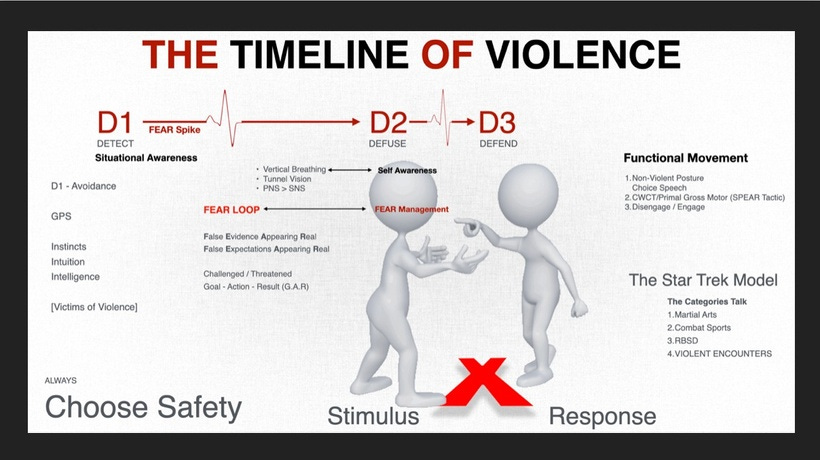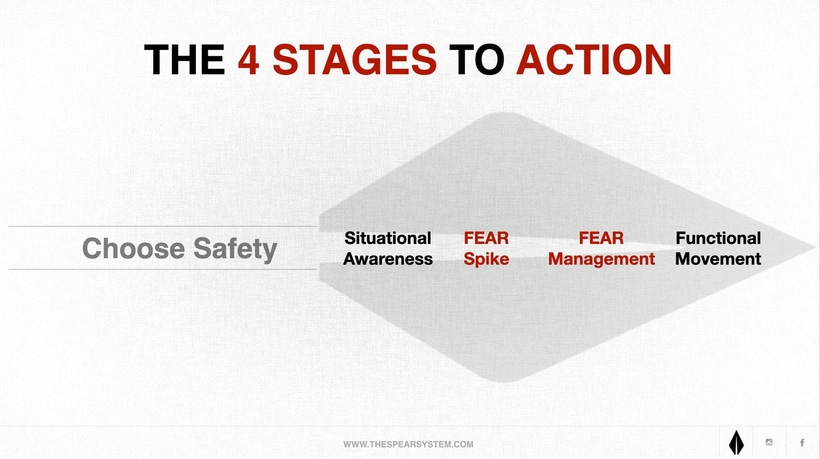The Psychology Of Fear And Its Influence On Mind Speed
I’m sharing a full class from last week's Garage Gym Combatives program. I felt it was so important that I had to give it to you.
If navigating violence, especially an armed robbery or active shooter event is of interest, then this video lesson is going to answer a lot of questions.
I don't typically share full classes from a paid membership page, but this was too important and if you know me, you know my mission: To make the world safer.
My only request of you is this: if you learn something and feel it has value, share it with family or friends. 🙏
CONTEXT: A student in the Garage Gym submitted a video of a robbery that went south when one of the victims grabbed the robber's gun and started wrestling with it. This video is the class that followed our debrief and assessment. This is the video we analyzed.
This post and video are much, much more than a behind-the-scenes glimpse or short how-to video. I get into some heavy shit and I hope you dive in.
PART 1
“Mind speed” is a cool term I first heard from my friend Michael Gervais, one of the world’s very best sports and performance psychologists. It’s a cool way to think about decision-making speed - that special gap between stimulus and response.
AFTER WATCHING THE CLASS, CONSIDER THESE IDEAS:
First, reframe what is and what isn't SCENARIO-BASED training. This is critical because the scenario will [always] influence your emotional and psychological posture.
1. Adding a prop, or training outside is not really scenario training. Working your technique for defense from a gun, headlock, tackle (and so on) is NOT scenario training. Yes, it’s a piece of the puzzle, but it’s NOT scenario training.
2. Gun Defense (for most) = a complex motor skill performed for speed and technique and that’s the rep. It is often devoid of any consideration of the scenario.
3. Context Changes Confidence. Does a gun disarm practiced with a plastic gun change if I use a paintball and tell you I’ll shoot you in the face if you screw up the move? Of course, it would. Even with safety glasses on and other protective equipment in place, that small addition of risk & penalty will change the fear which will change the physiology and tactical movement. Now imagine its a real gun.
4. A Map of the World (of violence). To add more nuance and reality to your scenario training you need to break it down into stages and make sure you are training in each stage. Replicating and/or visualizing using our TIMELINE OF VIOLENCE model (see graphic) will inspire you to consider and integrate much more than the complex motor skill you’re trying to master for your next belt grading 😉
Remember:
The scenario will [always] influence your emotional and psychological posture.
The scenario also changes the context.
Is the gun being used as a tool of intimidation? How will it be used? What do the THREE I's suggest? (Instincts, Intuition, Intelligence)
Is this a robbery, rape, abduction for ransom, torture, or attempted murder?
Each scenario has the potential to create a new level of stress.
Each scenario can influence your tactical response/choice too.
Every scenario changes our psychology.
Every scenario changes our physiology.
How we think affects how we feel.
How we feel affects how we think.
Both influence how and WHEN we move.
Context influences behavior.
PART 2
Simply doing [fun] disarms is NOT scenario training!
Even if the disarm technique is practical and can be used in each scenario, the first fight is processing what's happening as fast as possible.
PART 3
Multiple Choice: You've found yourself in the middle of a sudden violent encounter.
Are you in your:
1. COMFORT ZONE?
2. DISCOMFORT ZONE?
3. HOLY SHIT ZONE?
For most of the world, the answer is #3
We will get a fear spike.
We will need to manage that fear.
The fear and flinch will be organic, now we need to exploit them.
We now deploy the SPEAR System Formula: Threat discriminate/NVP/D2/CWCT/neuromuscular communication, deploy CWCT, and so on. (You learn this quickly and effectively via my Foundations digital class or by training with us online.)
When you genuinely plan your scenario-based training (using our THREE R’s model: Realistic, Relevant, Rigorous), you are developing mind speed!
You are working on self-awareness.
You are developing critical thinking skills.
You are visualizing.
You are integrating your nervous system beyond the practice of complex motor skills.
Debriefs and AARs lead to great awareness and discussion, which leads to deeper scenario training experience, which results in great competence, confidence, and self-mastery.
The SPEAR SYSTEM® represents a holistic approach to managing any confrontation.
Train hard and stay safe,
Coach Blauer
TAKE IT TO THE NEXT LEVEL
→ Train LIVE with me and the team in Las Vegas on July 16 & 17 at our Annual Summer Self-Defense Camp - click here
→ Trainers, Coaches, Instructors: Would you like to attend our Trainer Level Scenario Course? Click here for more info.
→ If you'd like to train with me LIVE in our Garage Gym and experience this style of learning and training, please click here.
→ Prefer watching videos? Here's a link to all our digital titles.
→ Learn more about me and my mission here.





